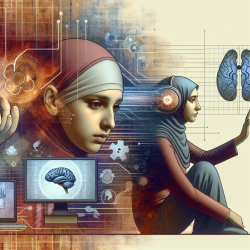Introduction
The X-linked HNRNPH2-related neurodevelopmental disorder is a complex condition that affects a significant number of individuals. This disorder is characterized by a range of symptoms including developmental delays, intellectual disabilities, and neuropsychiatric diagnoses such as autism spectrum disorder (ASD). As a practitioner, understanding the detailed clinical and psychological phenotype of this disorder can significantly enhance your ability to provide effective interventions and support for affected individuals and their families.
Key Findings from the Research
The research article "Detailed Clinical and Psychological Phenotype of the X-linked HNRNPH2-Related Neurodevelopmental Disorder" provides a comprehensive overview of the condition in 33 individuals. Here are some key takeaways:
- Genetic Variants: The study identified 11 different de novo missense variants in HNRNPH2, most of which are located within the nuclear localization signal. This highlights the importance of genetic testing in diagnosing and understanding the disorder.
- Phenotypic Spectrum: The disorder presents with a wide range of symptoms including developmental delay, intellectual disability, severe language impairment, and motor problems. Minor features include dysmorphic features, epilepsy, and cortical visual impairment.
- Gender Differences: The study found that males with variants in the NLS appear to have a more severe phenotype compared to females, challenging previous assumptions about the condition.
Implications for Practitioners
As a practitioner, integrating the findings from this research into your practice can lead to improved outcomes for your patients. Here are some ways to apply this knowledge:
- Early Diagnosis: Encourage genetic testing for early diagnosis, especially in cases where developmental delays or intellectual disabilities are present without a clear cause.
- Individualized Therapy Plans: Develop therapy plans that are tailored to the specific symptoms and needs of each individual, taking into account the wide phenotypic spectrum of the disorder.
- Family Support: Provide comprehensive support to families, including education about the disorder and strategies for managing symptoms at home.
Encouraging Further Research
The expanding understanding of the X-linked HNRNPH2-related disorder opens up numerous avenues for further research. Practitioners are encouraged to contribute to this growing body of knowledge by documenting and sharing their clinical experiences and observations.
Conclusion
The X-linked HNRNPH2-related neurodevelopmental disorder is a complex condition with a broad range of symptoms. By staying informed about the latest research and integrating these findings into clinical practice, practitioners can play a crucial role in improving the quality of life for affected individuals and their families.
To read the original research paper, please follow this link: Detailed Clinical and Psychological Phenotype of the X-linked HNRNPH2-Related Neurodevelopmental Disorder.










